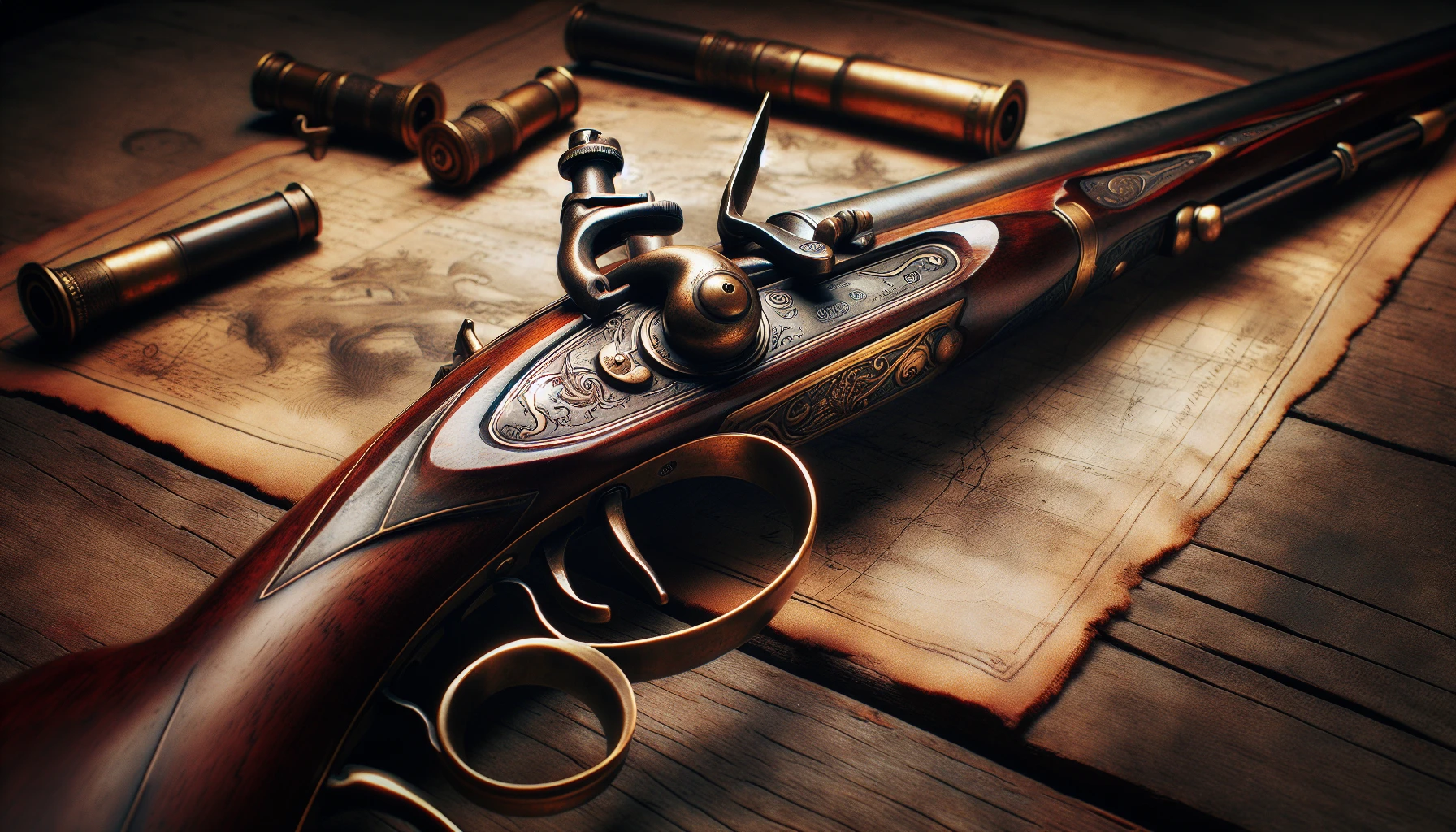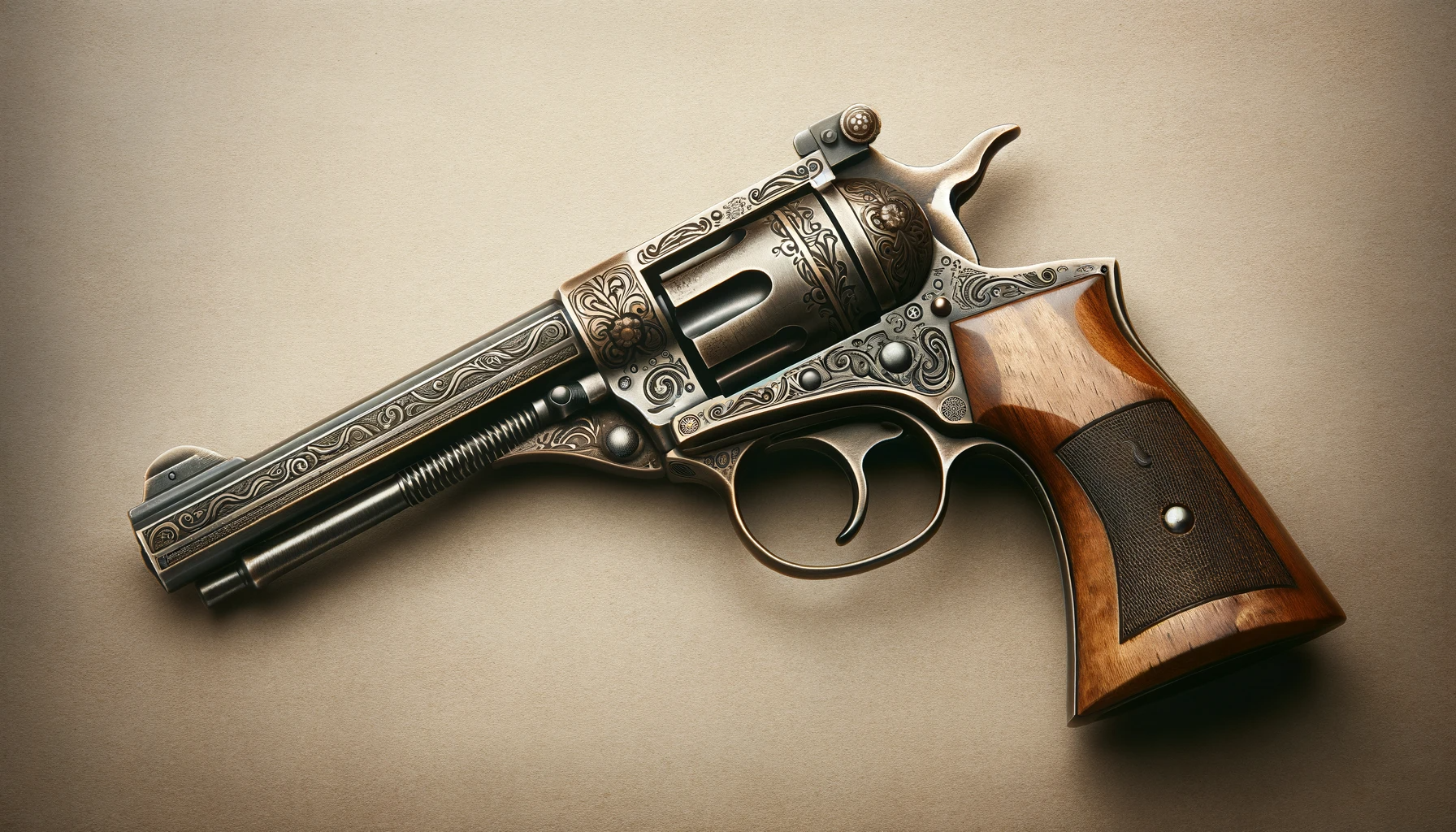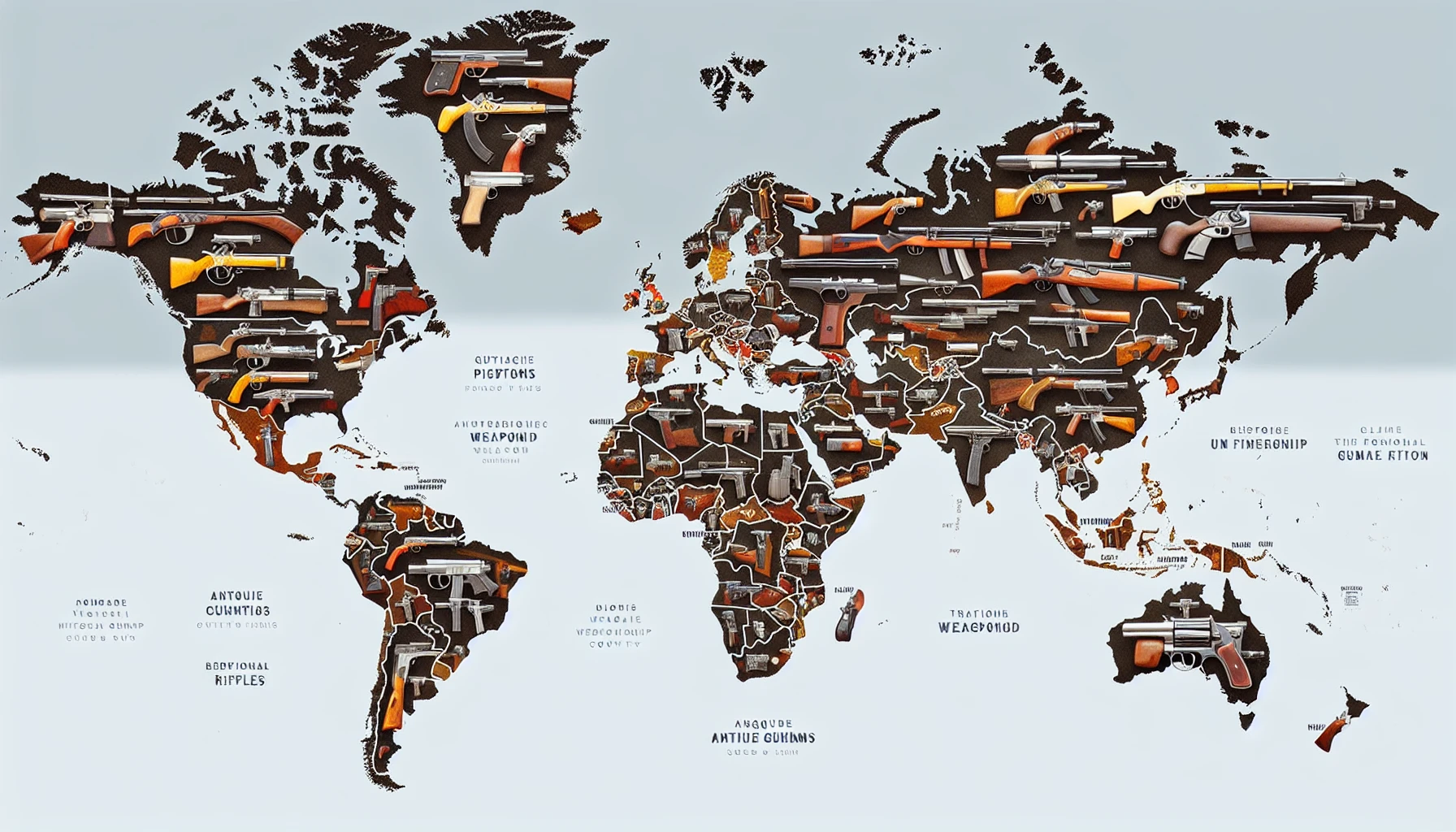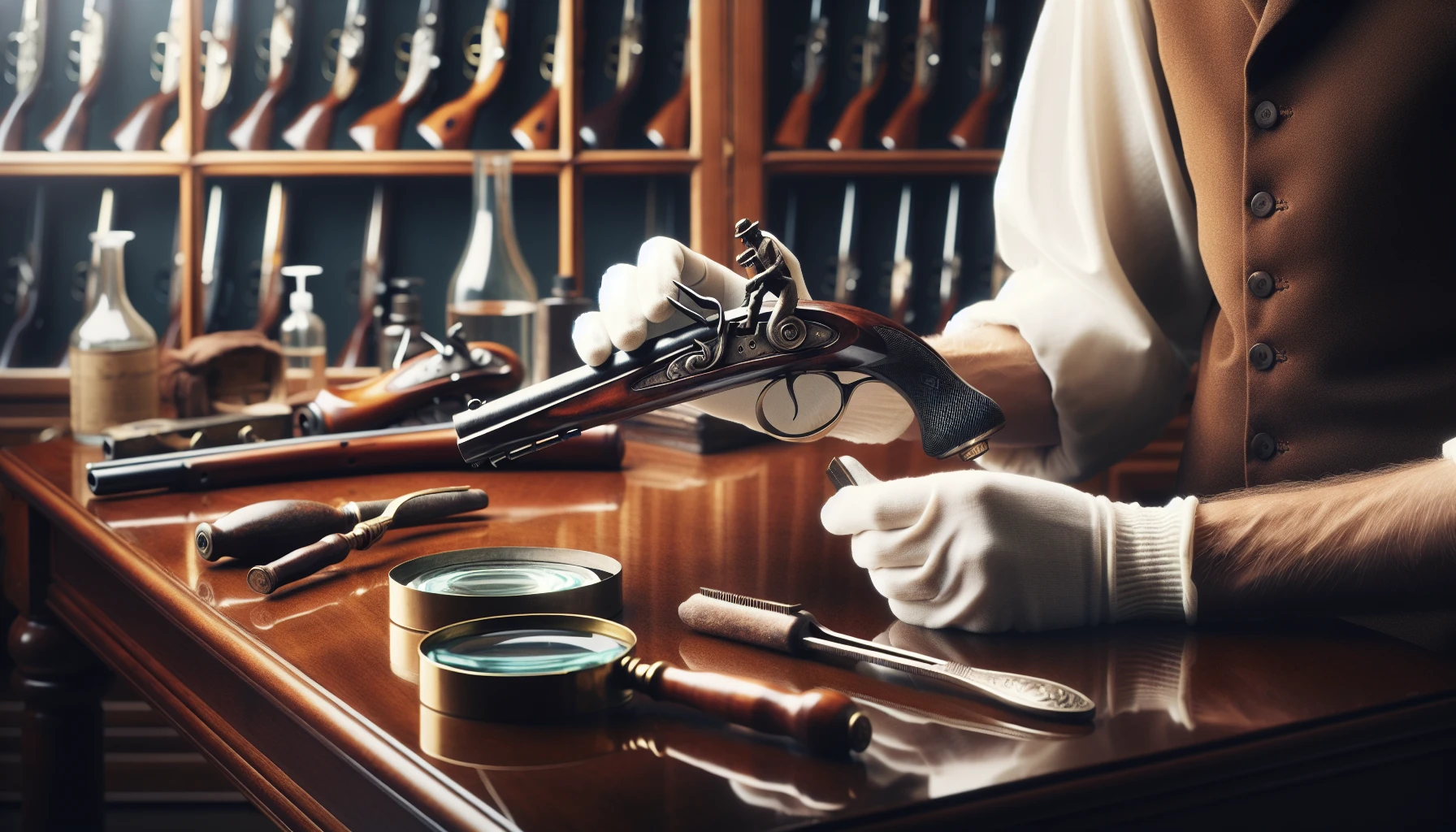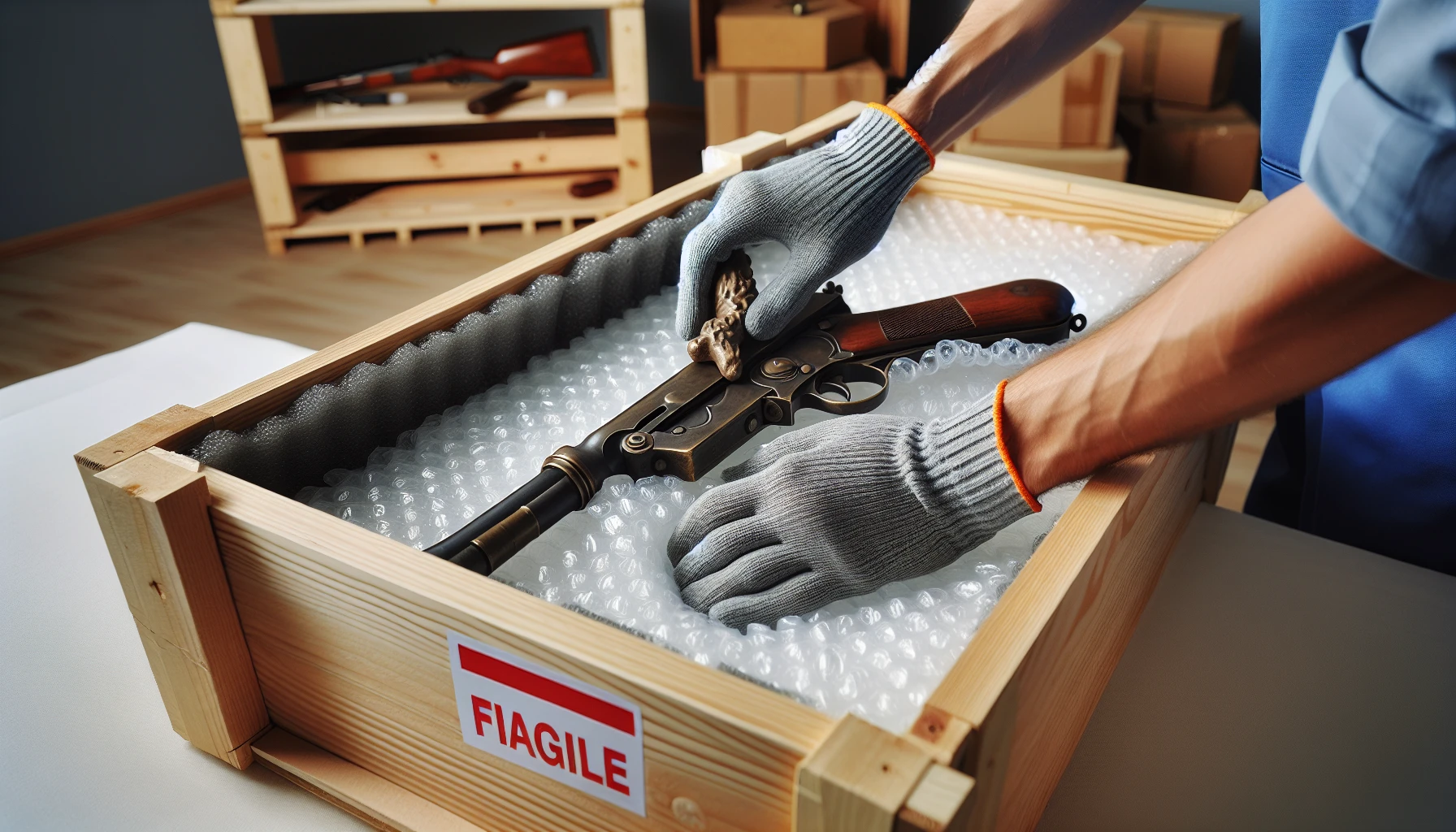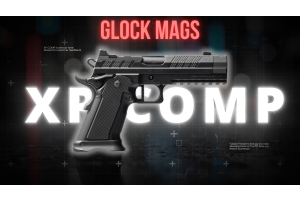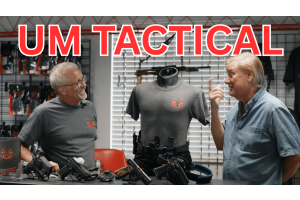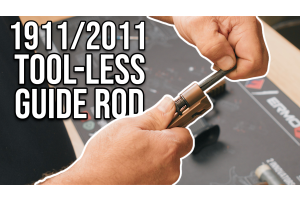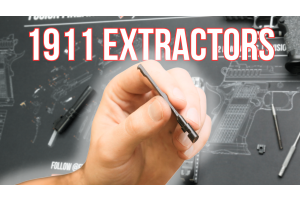The Collectors' Guide to Antique Firearm Essentials: History, Value, and Ownership Tips
0%
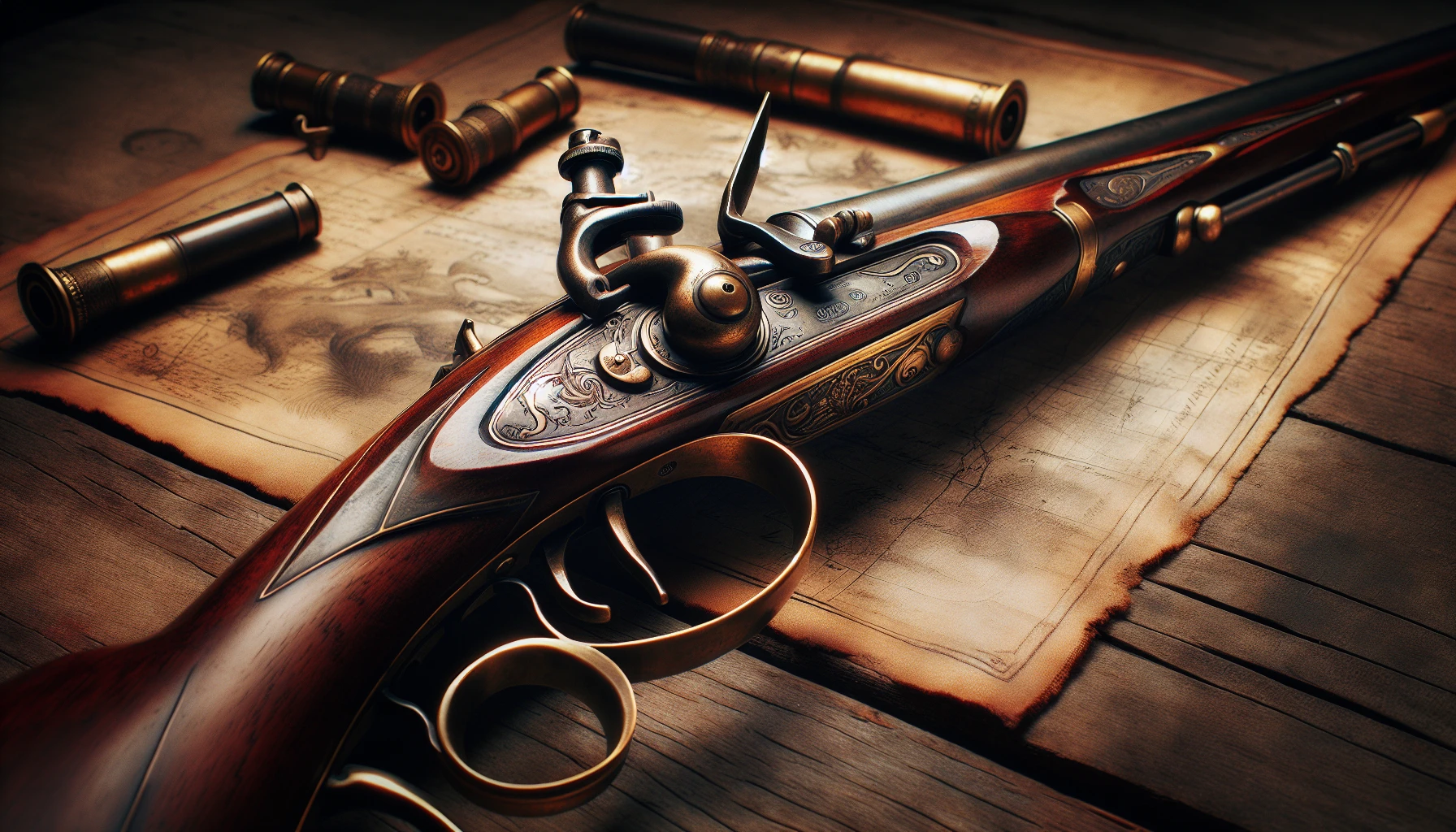
Imagine stepping into an era of flintlocks, muzzleloaders, and ornate craftsmanship – a world where antique firearms are not just tools of self-defense, but a reflection of the artistry and ingenuity of their creators. Welcome to the world of antique firearms, where each piece tells a story of historical significance and serves as a testament to the evolution of weaponry. As a collector or enthusiast, you’re not just acquiring an antique firearm – you’re preserving a piece of history and potentially investing in a valuable asset.
In this comprehensive guide, we will journey through the fascinating realm of antique firearms, uncovering their historical significance, valuation factors, legal landscape, and tips on how to preserve, maintain, and safely acquire these treasures. So, whether you’re a seasoned collector or a newcomer eager to learn more, let’s embark on this exploration of antique firearms and discover what makes them so captivating.
Key Takeaways
-
Antique firearms differ from modern firearms in design, ammunition and historical significance.
-
Collectors rely on trusted sources to identify antique guns based on age, design and manufacturing techniques.
-
The value of an antique gun is determined by rarity, condition, provenance & market dynamics. Collectors must also be aware of legal implications for ownership & shipping practices.
Understanding Antique Firearms
Antique firearms are a unique breed of weaponry, distinct from their modern counterparts in design and historical context. These firearms, designed and manufactured prior to the 20th century, typically used fire fixed ammunition, a stark contrast to conventional centerfire fixed ammunition utilized by contemporary firearms. The allure of antique firearms lies in their historical significance, craftsmanship, and monetary worth, qualities that make them highly sought after by collectors and enthusiasts alike.
What distinguishes antique firearms from modern ones? One must consider the grading of antique firearms. Typically, they are considered in the same condition if they retain 80% of their finish, compared to modern firearms which require 90% of their finish to be labelled as in “Very Good” condition. Another distinguishing factor is the historical significance of antique firearms as they mark the progression of weaponry from traditional muzzle-loading weapons to more advanced modern firearms.
The Historical Significance of Antique Guns
From the Revolutionary War to the Civil War and the emergence of early firearms in the 14th century, antique firearms have played a pivotal role in shaping human history. Their impact on modern warfare and firearm design is undeniable, as they have provided invaluable insights into the development of firearm technology, leading to enhancements in design, functionality, and performance. Some of the most sought-after antique guns among collectors and history enthusiasts include:
-
Millikin Colt Dragoon Revolver
-
Simon Bolivar Pistols
-
Danish Sea Guns
-
Vintage Winchester rifles
-
Muzzleloading rifles
These antique firearms, often considered antiques, offer a glimpse into the past and are highly valued for their historical significance and craftsmanship. One such example is the use of the percussion cap in some of these firearms.
Antique firearms have not only influenced the course of history but have also shaped social and political landscapes throughout the ages. From their role in colonial trade and government to their cultural significance in various societies, these guns symbolize the early design and operation of firearms, tracing back to the Middle Ages when gunpowder was first invented. Today, antique guns continue to captivate collectors and enthusiasts, who appreciate the legacy and historical connections these firearms represent.
Identifying Characteristics of Antique Firearms
When it comes to identifying antique firearms, age, design, and manufacturing techniques play a significant role. In Australia, antique firearms are those manufactured prior to January 1, 1901. This applies for all types of single-shot and double-barrel muzzleloading firearms in all States. However, it is possible for a weapon with date marks post-1898 to be considered an antique firearm, especially if the ammunition for the weapon is no longer manufactured. The Finnish M39 (Ukko-Pekka) Mosin–Nagant rifles with hexagonal profile receivers are a prime example of a firearm that can be deemed an antique, despite being adopted post-1898, and not a replica thereof.
Collectors rely on a reliable reference, such as The Pre-1899 Antique Guns FAQ by James Wesley Rawles, to determine whether a particular firearm is an “antique.” This reference determines whether the firearm’s serial number is within the range of “antique” (pre-1899) production. In the United States, the cut-off date for exempt antique status under U.S. law is December 31, 1898. Understanding these criteria and referring to trusted sources enables collectors to confidently identify and acquire authentic antique firearms for their collections.
Valuation Factors for Antique Firearms
The value of antique firearms hinges upon a delicate balance of factors, including:
-
Rarity: often determined by limited production quantities, distinctive characteristics, and the age of the firearm
-
Condition: greatly impacts its value, as refinishing or restoration may detract from its worth, while original condition and minimal wear can increase its appeal to collectors
-
Provenance: provides details about the history, ownership, and utilization of the firearm, which can significantly affect its value as collectors and dealers consider prior owners, historical significance, and documentation of the firearm’s chain of ownership.
Understanding the role of auctions and commercial trade is key to navigating the complex factors affecting the valuation of antique firearms. Auctions provide a platform for collectors and enthusiasts to bid on rare and unique firearms, which could potentially increase prices and market value. In contrast, the demand and supply dynamics in the commercial market can affect the prices of antique guns, with factors such as rarity, condition, historical significance, and desirability among collectors all influencing their market value. Additionally, purchasing through ordinary channels may not always yield the same results as auctions or commercial trade.
Assessing the Market: Auctions and Commercial Trade
Auctions and commercial trade significantly influence the market value of antique firearms. Auctions provide an avenue for collectors and enthusiasts to bid on rare and unique firearms, which could potentially increase prices. The competitive nature of auctions can instill a sense of urgency among buyers, resulting in higher bids and increased market value. The firearm’s historical significance or provenance can also enhance its value at auction. Renowned auction sites for antique firearms include Rock Island Auction Company, GunBroker, and Morphy Auctions. The procedure for selling antique firearms at auctions typically entails selecting the appropriate auction house, obtaining an appraisal, consigning the firearm, advertising it to potential buyers, including it in an auction event, dealing with the sale and transaction, paying a commission fee to the auction house, and receiving a settlement statement.
Conversely, the commercial trade of antique firearms can greatly influence their market value. Elements such as rarity, condition, historical significance, and appeal to collectors can all affect the market value of antique guns. The activities of buying and selling in commercial trade can generate trends and price fluctuations. Therefore, collectors need to keep abreast of market dynamics to make sound investment decisions.
Pricing Trends and Collectible Models
Pricing trends and collectible models play a crucial role in determining the overall value of antique guns. Current pricing trends for antique firearms demonstrate a steady increase in prices, with some specific models experiencing considerable jumps in value. For example, the M1911 has registered a rise in prices since 2015, with a significant increase of $733 in 2019 and 2020. Generally, antique gun prices have been on the upswing due to diminishing supply and escalating demand. To stay informed about market trends, collectors should consult reliable sources for accurate pricing information.
The model of a firearm can significantly affect its collectibility and price. Factors such as rarity, demand, and condition play a major role in determining the market value of a firearm. Some of the most sought-after antique firearms among collectors include:
-
Browning Model 1911
-
Post-Civil War Colt Single Action Armies
-
Winchester Lever Actions
-
Luger
-
Smith & Wesson revolvers
Historical events also play a significant role in the pricing of antique firearms, with firearms connected to noteworthy historical events or used by renowned figures commanding higher prices than those without such connections. By understanding these factors, collectors can make informed decisions when buying and selling antique firearms.
Legal Landscape of Antique Gun Ownership
The legal landscape of antique gun ownership varies by country, with different regulations and definitions of “antique” firearms. In the United States, any cartridge firearm manufactured prior to 1898 is generally classified as an “antique” and is typically excluded from Federal jurisdiction. However, this definition can differ across countries, with some nations having unique regulations and exemptions for antique firearms. Collectors and enthusiasts need to comprehend the legal landscape of antique gun ownership to comply with local laws and regulations.
It is also important to recognize that replicas and modern muzzleloaders may have different legal implications than original antique firearms. Here are some key points to consider:
-
Replicas of antique guns are usually categorized as antiques under the law in Europe, meaning they can typically be owned without a firearms license.
-
In the United States, modern muzzleloading replicas of antique guns are not subject to Federal jurisdiction. They are essentially classified in the same manner as an antique firearm.
-
Nonetheless, local laws and regulations should always be consulted to determine the specific legal implications of owning and handling replicas and modern muzzleloaders.
Country-Specific Regulations
Each country has its own regulations regarding antique firearms, including licensing and exemptions. Here are some examples:
-
In Australia, any single-shot or double-barrel muzzleloading firearms manufactured before January 1, 1901, are considered antique. This is true for all states in the country.
-
In Canada, antique firearms are defined as any firearm manufactured prior to 1898.
-
In Spain, Article 107 of the Regulations on Arms classifies firearms manufactured before 1870 as exempt antiques. This exemption provides various ownership advantages to antique arms collectors.
It is important for collectors to be aware of the country-specific regulations that may apply to their antique firearm collection.
Some countries have made special provisions within their gun laws for antique firearms. In the Netherlands, for example, antique firearms produced prior to January 1, 1870, and firearms intended to be loaded with loose balls and black powder or cartridges excluding rimfire cartridges in caliber .22 or centrefire cartridges, are considered exempt in the Netherlands. In Argentina, it is permissible to sell, buy, and collect any muzzleloading black-powder firearms, new or old, as well as all types of mobile (e.g. revolver) and static (e.g. cannons) guns and ammunition manufactured up to 1870, inclusive. Understanding these country-specific regulations, including factors such as barrel length, is vital for collectors to ensure compliance with local laws and to avoid any potential legal issues.
Handling Replicas and Modern Muzzleloaders
Replicas and modern muzzleloaders present unique legal considerations in the world of antique firearms. While replicas are typically classified as antiques under the law in Europe, allowing them to be owned without a firearms license, modern muzzleloading replicas of antique guns in the United States are not subject to Federal jurisdiction and are essentially classified in the same manner as an antique firearm. Collectors need to understand the legal implications of owning and handling replicas and modern muzzleloaders in their respective countries.
The legal distinction between a modern muzzleloading rifle and an antique firearm can be based on the use of metallic cartridges. Muzzleloaders are classified as primitive arms due to their lack of use of metallic cartridges. Some states consider a muzzleloader as ‘antique’ until it is loaded, at which point it is considered a firearm. However, certain muzzleloaders are excluded from being labeled as antique firearms under federal law. To navigate the legal landscape of handling replicas and modern muzzleloaders, collectors should consult local laws and regulations to ensure compliance and avoid any potential legal issues.
Preserving and Maintaining Your Antique Firearm Collection
Proper preservation and maintenance are necessary to maintain the value and historical integrity of antique firearms. Environmental factors can significantly impact the preservation of antique firearms, as moisture exposure can lead to corrosion and rust, which could detrimentally affect the metal components of the firearm. To prevent damage, it is advisable to store antique firearms in a dry environment, keep them dust-free, and avoid using commercial dust cloths.
Moreover, extreme temperature fluctuations can also have a negative effect on the preservation of antique firearms, so it is best to store firearms in a stable temperature environment. Beyond environmental considerations, appropriate cleaning techniques are necessary for preserving the integrity of antique firearms. Cleaning antique firearms with a soft cloth lightly sprayed with water is recommended, and nylon or animal-bristle bore brushes are preferable to brass or steel brushes to avoid scratching.
By following these guidelines and employing proper preservation techniques, collectors can ensure that their antique firearm collection remains in prime condition, maintaining both its value and historical significance.
Restoration Considerations
The decision to restore an antique firearm should be carefully considered, as it can impact the value and authenticity of the piece. Restoration is the process of repairing and refurbishing an antique firearm to its original condition, often requiring professional expertise in gunsmithing. This encompasses knowledge of firearm mechanics, safety protocols, and the ability to repair and refurbish antique firearms.
The restoration process typically involves:
-
Establishing the specifics of the gun, including its ignition system
-
Disassembling it with care
-
Cleaning each individual piece
-
Repairing or replacing any damaged or worn-out parts
-
Reassembling the gun
-
Testing its functionality and safety
While restoration can potentially enhance the appearance and functionality of an antique firearm, it may also detract from its value and authenticity if not carried out properly. Common restoration methods include:
-
Repairing internal cracks and weaknesses
-
Retaining and repairing original parts
-
Disassembling and cleaning the gun
-
Polishing and prepping the metal
-
Utilizing abrasive blasting or steel epoxy finishes
Before embarking on a restoration project, collectors should carefully weigh the potential benefits and drawbacks, and consult with a professional gunsmith to ensure the best possible outcome.
Legal Implications of Modifying Antique Firearms
Modifying antique firearms may have legal implications and should be done in accordance with local laws and regulations. While antique firearms manufactured prior to 1898 are generally exempt from firearm regulations and are not legally regarded as firearms, modifying an antique firearm may have implications for its legal status, depending on the jurisdiction and the modifications made. To avoid potential legal issues, collectors should research local laws and regulations to determine how modifying an antique firearm may affect its legal status.
It is also important to recognize that modifying an antique firearm may impact its value and desirability among collectors. For example, altering the original finish, engraving, or other unique characteristics of an antique gun may detract from its appeal to collectors and potentially reduce its market value. Before making any modifications to an antique firearm, collectors should carefully consider the potential consequences and consult with a professional gunsmith or firearms expert to ensure that any changes made are in line with local laws and do not compromise the integrity of the piece.
Selling and Acquiring Antique Firearms
The process of buying and selling antique firearms involves several key factors, including proper licensing, documentation, and safe shipping practices. In general, no federal dealer’s license is required to sell antique firearms, as the manufacture date must be prior to 1899 to be classified as an antique. However, specific regulations may apply in certain states, so it is important to be aware of local laws and requirements. When acquiring antique firearms, no licensing requirement exists, but a permit is necessary to possess an antique firearm.
Ensuring proper documentation when buying or selling antique firearms is also crucial, as a certificate of authenticity or a bill of sale with the year of manufacture of the antique firearm can serve as evidence of its age. Additionally, safe shipping practices are essential when selling antique firearms, as it is important to utilize a trustworthy shipping company that is familiar with the laws and regulations pertaining to the shipment of firearms. By following these guidelines and adhering to proper licensing, documentation, and shipping practices, collectors can safely and confidently buy and sell antique firearms.
Licensing and Documentation
Prior to buying or selling antique firearms, one must ensure that all required licenses and documentation are in place. While selling antique firearms generally doesn’t require a federal dealer’s license or official documentation, it’s advisable to keep a certificate of authenticity or a bill of sale with the manufacturing year of the antique firearm as proof of its age. The buyer is typically responsible for obtaining any required permits or licenses to possess an antique firearm.
Reliable references, such as The Pre-1899 Antique Guns FAQ by James Wesley Rawles, can help collectors verify the authenticity of an antique firearm. They can use this information to determine if the serial number of the weapon falls within the range of pre-1899 production. By ensuring proper documentation and adhering to local licensing requirements, collectors can confidently buy and sell antique firearms, preserving their historical significance and value.
Safe Shipping and Handling
Adhering to safe shipping and handling procedures is imperative when transporting antique firearms to safeguard their integrity and value during transactions. To ensure proper packaging, follow these steps:
-
Use a thick cardboard box.
-
Wrap the firearms in old towels, not plastic or bubble pack, and secure them with masking tape.
-
Double wrap the firearms for additional protection.
-
Package them in a manner that prevents any movement during shipping.
-
Include the necessary documentation, such as a certificate of authenticity or bill of sale, when shipping the antique firearm.
Shipping companies that specialize in transporting antique firearms, such as UPS, have specific restrictions and guidelines for shipping firearms. To ensure compliance with all legal requirements and regulations when shipping antique firearms, collectors should use a trustworthy shipping company that is familiar with the laws and regulations pertaining to the shipment of firearms. Additionally, consider insurance coverage, tracking information, and signature at delivery to guarantee the safe arrival of the antique firearms and protect their value during shipping.
Summary
Navigating the world of antique firearms can be an exciting and rewarding journey. From understanding the historical significance and identifying characteristics of these unique pieces to assessing their value, navigating legal landscapes, and preserving and maintaining a collection, collectors and enthusiasts can appreciate the artistry and legacy that antique firearms represent.
By staying informed of the latest market trends, legal regulations, and best practices for preservation and maintenance, collectors can confidently buy, sell, and cherish their antique firearms, knowing that they are not only preserving a piece of history but also potentially investing in a valuable asset. As we continue to explore the fascinating world of antique firearms, let us appreciate the craftsmanship, ingenuity, and historical significance these treasures hold and share our passion and knowledge with future generations.
Frequently Asked Questions
What gun is considered an antique?
Under federal law, any firearm made in or before 1898 is considered an antique firearm and falls outside of the jurisdiction of the Bureau of Alcohol, Tobacco, Firearms and Explosives. These firearms may include matchlock, flintlock, percussion cap, or similar types of ignition system.
What is the ATF definition of an antique firearm?
According to the ATF, an antique firearm is defined as any firearm manufactured before 1898 and any replica thereof that is not designed for use with rimfire or center fire ammunition. This includes firearms using matchlock, flintlock, percussion cap, or similar ignition systems.
Are antique guns legal in the US?
Antique firearms produced before 1898 are generally exempt from federal regulation, though some states may define and regulate antique firearms differently. Therefore, antique guns can be legal in the US, depending on state laws.
What is the main difference between an antique firearm and a modern firearm?
The primary distinction between an antique and modern firearm is that antique firearms use fire fixed ammunition, while modern firearms are designed to use conventional centerfire fixed ammunition.
How can I determine the value of an antique firearm?
To accurately determine the value of an antique firearm, one must consider factors such as rarity, condition, provenance, historical significance and market trends.


